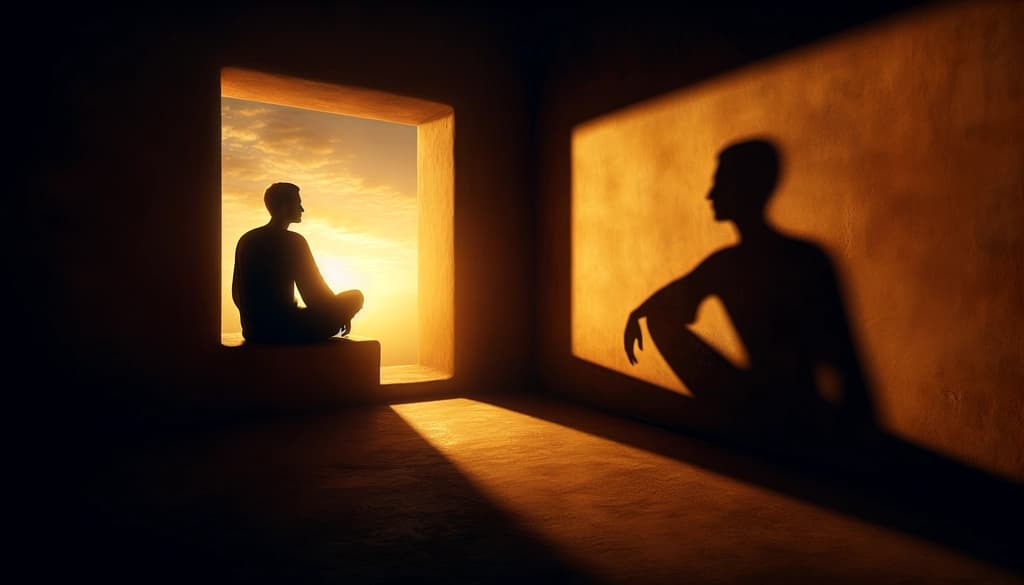Becoming Ego-Aware: Honoring the Self Without Getting Lost Inside It

What Is Ego-Awareness?
To become ego-aware is not to strip away your sense of self, nor to wage war with inner voices that clamor for attention. It is to notice—like a hand brushing through tall grass—how thoughts, preferences, memories, and fears gather around the “I.” What is the ego can provide a deeper understanding of these layered experiences.
The ego is a clever shape-shifter, surfacing in moments of pride and shame alike, urging us to stand out or hold back, to defend or to withdraw.
But ego-awareness begins quietly. It is the willingness to observe the little self at work, as though watching a loyal old dog—sometimes barking at shadows, sometimes curled at your feet. Noticing does not mean judging. To become ego-aware is simply to see: “Oh, this hesitation, this need for recognition—here is my ego, trying to protect and define me.”
Healing the Wounded Ego With Gentle Attention
For many, the ego feels wounded—knotted with old stories, criticism, and comparison. You might sense this as an ache in the heart or a tightness in the belly, especially when rejected, overlooked, or misunderstood. Healing the wounded ego is not about erasing these knots but bringing warm light to them.
You might try:
- Sitting in stillness and naming sensations without blame—“Tension in the chest, heat in the face.”
- Bidding yourself gentle questions: “What is this feeling protecting? How might I comfort this part?”
- Allowing, for a few breaths, the truth that everyone carries wounds; you are not alone in your longing to belong.
If you're curious about untangling the distinction between ego and your deeper essence, you might explore Ego vs true self.
As wounds are noticed and met, the ego softens—not gone, but gradually less burdened, more transparent.
Ego Death vs. Ego Integration: Two Paths, One Heart
The phrase “ego death” may conjure up dramatic surrender—a self that is utterly dissolved, pure spirit remaining. But for most, the journey is subtler, less a battle than a truce.
Ego integration is the art of befriending the ego. Instead of banishing the self, you invite it into wholeness, allowing all the fractured parts to step into the light and be known. Consider this: When you integrate the ego, you make space for its worries and dreams, without letting them rule. You are not the ego—but you do not need to destroy it. An integrated ego becomes less noisy, more flexible—a companion rather than a prison.
To deepen your exploration of dissolving ego's edges, you might reflect on How to dissolve the ego or explore the concept of transcending ego directly through How to transcend the ego.
"There was a moment, washing dishes, when he noticed his mind rehearsing old arguments, bracing against imagined slights. He paused, warm water running over his hands, and gently whispered: I see you. The world did not fall apart; instead, his heart loosened, and the sky outside seemed impossibly wide."
The Dance of Ego and Spiritual Growth
Many spiritual teachings urge us to transcend the ego, but the truth is more nuanced. Ego-awareness is not a detour from spiritual growth; it is a doorway. When you meet the self honestly—pride, fear, yearning, shame—you plant your feet on fertile ground.
You might notice:
- In relationships, how your need to “be right” or to “be needed” shapes your words.
- In solitude, how voices of inadequacy sometimes drown out quiet contentment.
- In moments of connection, how wonder and humility arise when the ego relaxes its grip.
Sometimes, spiritual growth itself can become a subtle trap for ego identity, known as the spiritual ego trap.
Rather than seeking some pure ego death, try weaving ego and awareness together—integrating, not severing. The ego becomes part of the vehicle for presence, not its hindrance. It can be illuminating to inquire into Who am I inquiry or explore the interplay of Identity and illusion in your own journey.
Living Ego-Aware: A Gentle Invitation
To be ego-aware is a practice, not a destination. You might bring curiosity to your thoughts, to each emotional weather that passes through. As you navigate daily life—at the table, in traffic, in the quiet hour before dawn—allow yourself to notice the old patterns. Offer a hand, not a fist.
May you honor the textures of your own humanity. May you see the ego as a loyal companion, sometimes misguided, always longing to keep you safe. There is no need to disappear—only to remember, again and again, the vastness of being that lies quietly behind every story of “I.”
